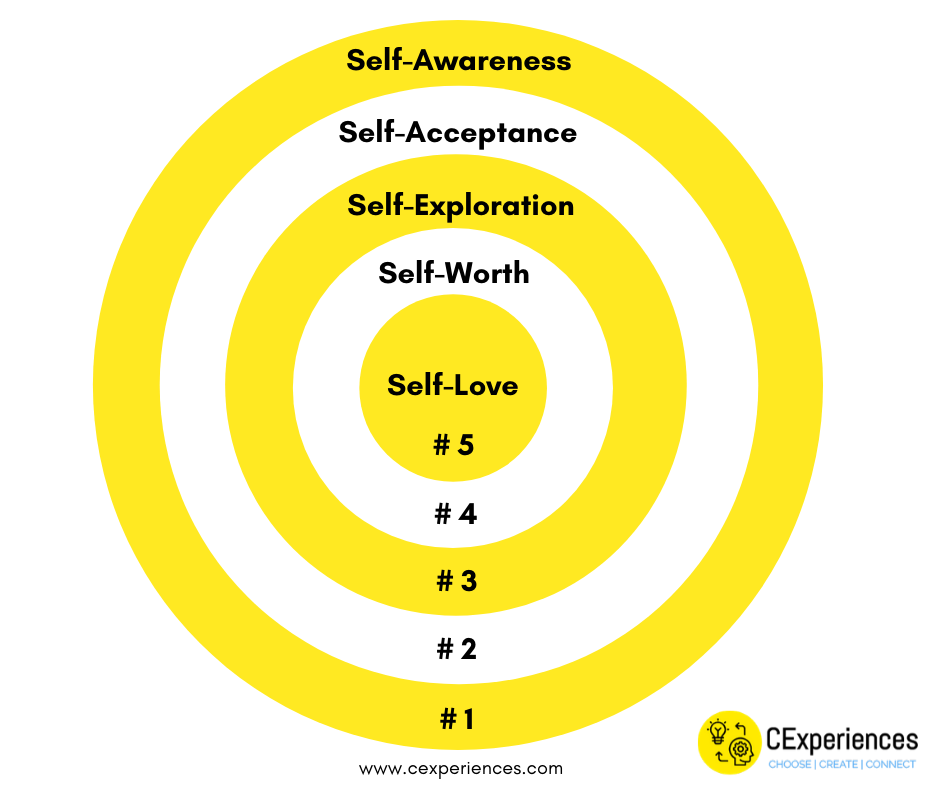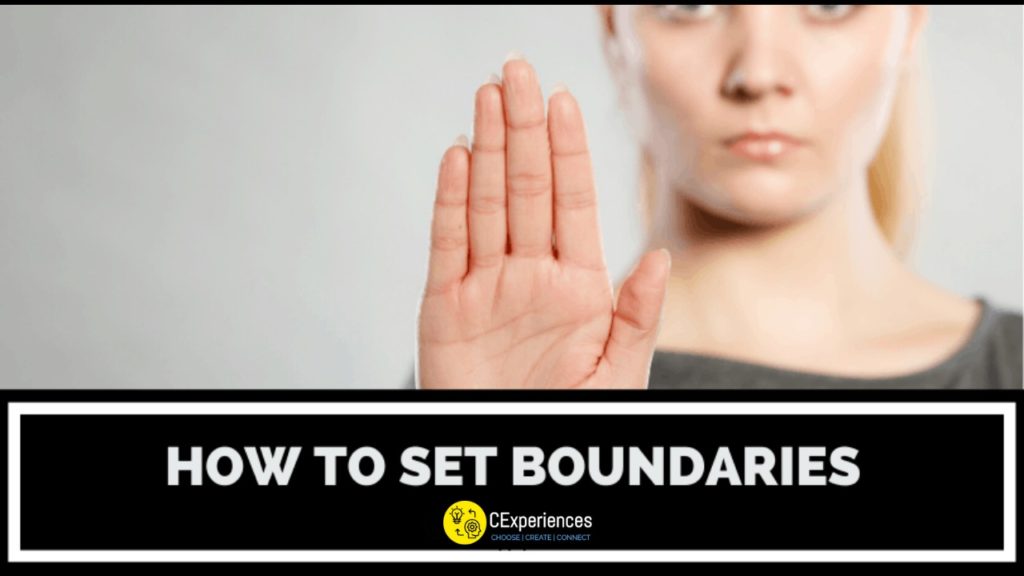
Raise your hand if you struggle with setting boundaries or enforcing them?



Umm….Still not sure?
Here are some signs that your boundaries need adjusting:
- Feel unable to say no
- Feel responsible for others’ emotions
- Concerned about what others think to the point of discounting your own thoughts, opinions and intuition
- Your energy is so drained by something that you neglect your own needs (including the need for food, rest, etc.)
- People-pleasing
- Avoiding intimate relationships
- Inability to make decisions
- Believe your happiness depends on others
- Take care of others’ needs, but not your own
- Others’ opinions are more important than your own
- Have difficulty asking for what you want or need
- Go along with others vs. with what you want
- Feel anxious or afraid
- Not sure what you really feel
- Take on moods or emotions of others around you
- Overly sensitive to criticism
I get it…i mean, it’s draining to constantly put everyone else in front of your own needs selflessly.
And when you give so much…it just makes you feel so resentful because you’re not validated, not appreciated and couldn’t tell others when you need or want.
But let’s face it… it’s not their fault! It’s yours, because you don’t have boundaries…
And do you know what the sad truth is?

BUT the GOOD NEWS is:
You just need to know how to 
“To set healthy boundaries with others, you must be able to set them with yours” – Cyndi Liang
Knowing how to set boundaries is a lifetime SKILL that needs to be learned, applied and adjusted.
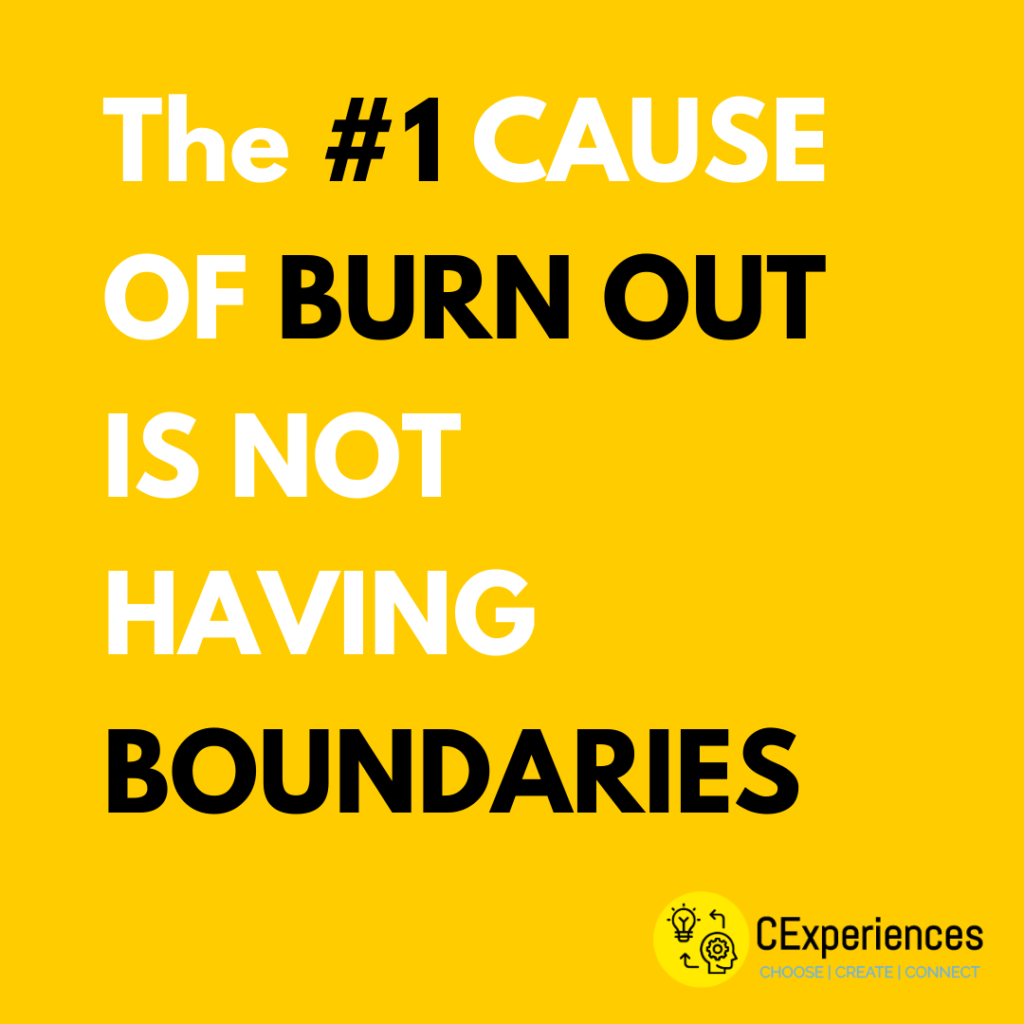
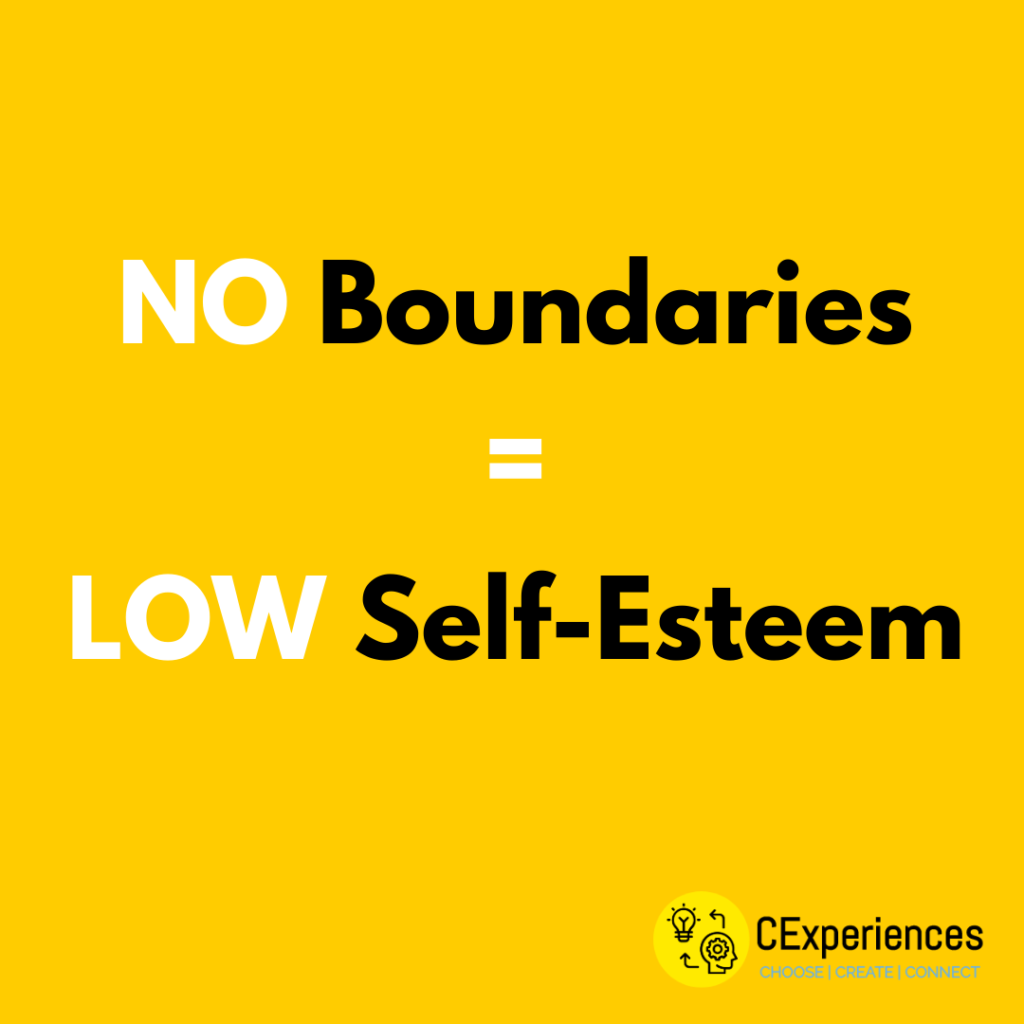
What Are Boundaries?
Boundaries are guidelines, rules or limits that a person creates to identify for themselves what are reasonable, safe and permissible ways for other people to behave around them and how they will respond when someone steps outside those limits.
Why is it important to Set Boundaries?
A lack of boundaries is like leaving the door to your home unlocked: anyone, including unwelcome guests, can enter at will. On the other hand, having too rigid boundaries can lead to isolation, like living in a locked-up castle surrounded by a mote. No one can get in, and you can’t get out.
- Emotional pain: guilt, resentment, dependency, depression, anxiety,
- Physical pain: stress-induced physical illness
- Loss of respect from self and others
- Loss of control of the direction of your life
- Increased chaos, distractions.
- Loss of interest in life.
Creating healthy boundaries is empowering, they help you:
- Define Your Identity
- Protect Yourself from the control of others
- Express your true self and protect your self-esteem
- Have more respect from others and maintain self-respect
Build healthy relationships and a life with love and freedom.
Different Types of Boundaries
- Physical Boundaries (you are entitled to your space, however wide it may be, as are others)
- Intellectual Boundaries (you are entitled to your own thoughts, opinions and ideas, as are others)
- Emotional Boundaries (you are entitled to your own feelings to a given situation, as are others)
- Social Boundaries (you are entitled to your own friends and to pursuing your own social activities, as are others)
- Spiritual Boundaries (you are entitled to your own spiritual beliefs, as are others)
- Time Boundaries (you are entitled to your own time, as are others)
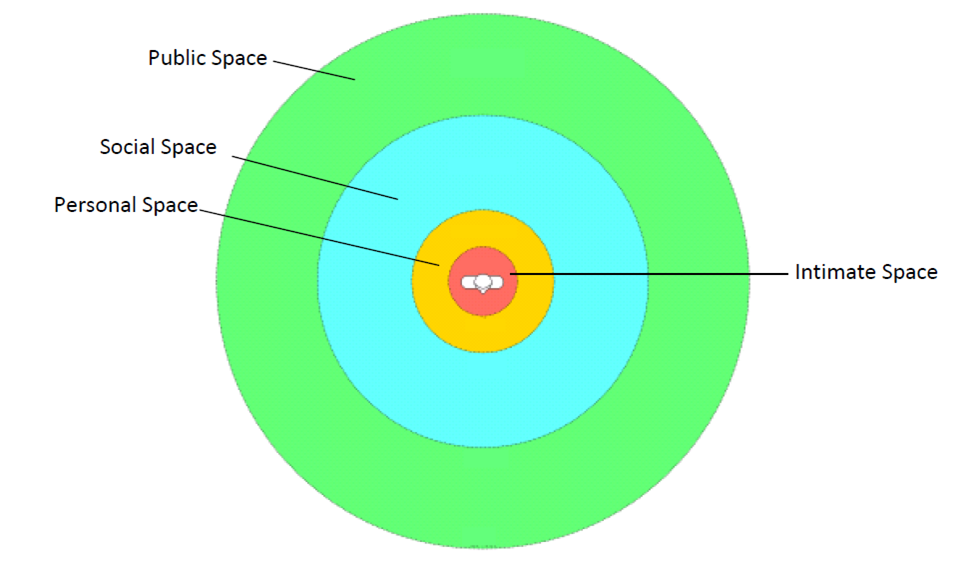
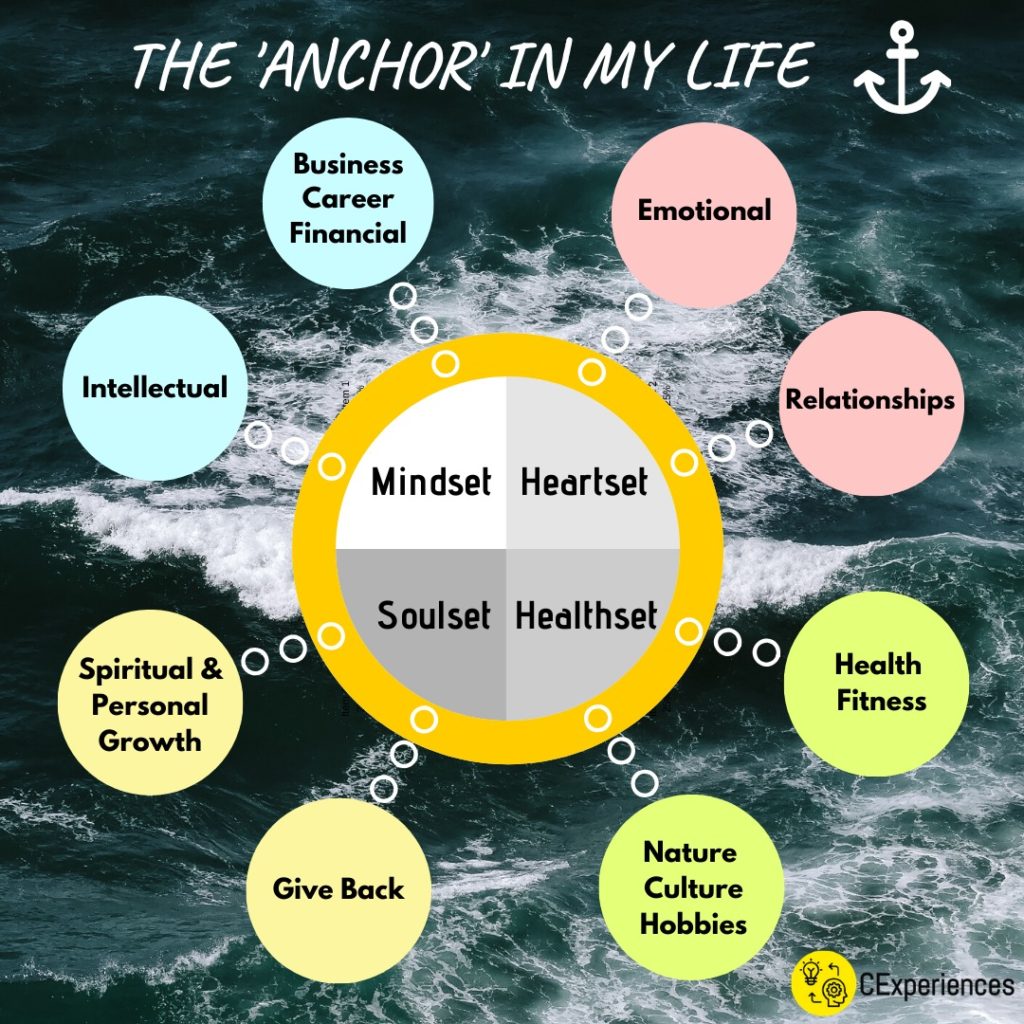
Are your boundaries Rigid, Porous or Healthy?
A person who always keep others at a distance (weather emotionally, physically, or otherwise) is said to have rigid boundaries. Alternatively, someone who tends to get too involved with others have porous boundaries.
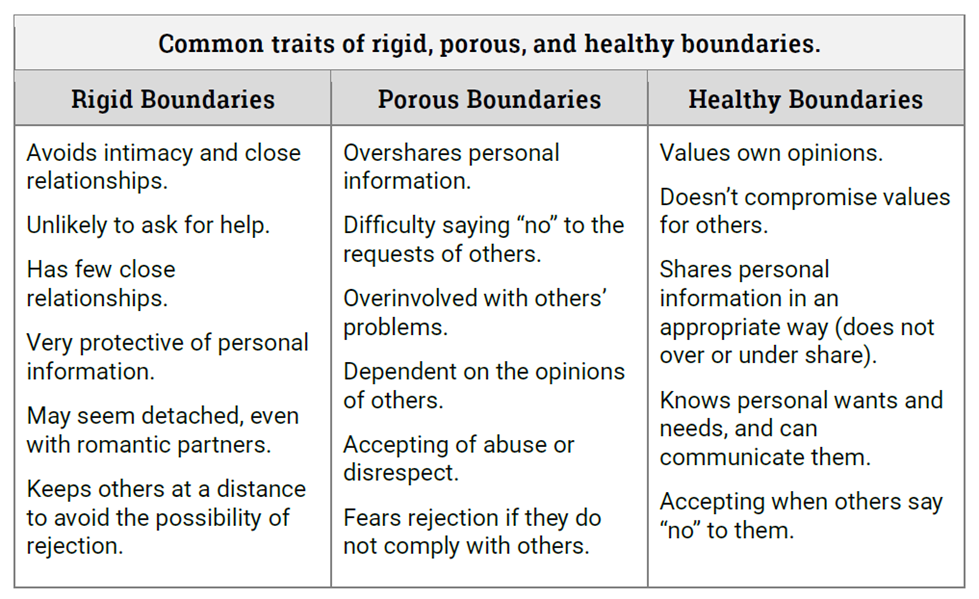
HOW TO SET HEALHTY BOUNDARIES WITHOUT GUILT?
STEP 1: DEFINE YOUR DESIRED BOUNDARIES
Tip 1. Ask what are your rights and needs?
Exercise: Completing the following 3 sentence with at least 10 examples.
1. WRITE YOUR “NO” LIST
People may not ___________________.
For example:
- Go though my personal belongings
- Criticize me
- Make comments about my weight
- Take their anger out on me
- Humiliate me in front of others
- Invade my personal space
- …….
2. WRITE YOUR “YES” LIST
I have a right to ask for ___________________.
For example:
- Privacy
- A new hairstyle from an old stylist
- Help around the house
- More info before making a purchase
- Quiet time to myself
- Personal space
…….
3. WRITE YOUR “SELF-LOVE” LIST
To protect my time and energy, it’s OK to _________________.
For example:
- Take my time returning calls or e-mails
- Change my mind
- Cancel a commitment when I’m not feeling well
- Be treated with respect
- Make my needs as important as others
- Not meeting other’s unreasonable expectations of me
- Say no without feeling guilty
- ……
Tip 2. Follow your gut.
Your instincts can help you determine when someone is violating your boundaries or when you need to set one up.
Check in with your body (heart rate, sweating, tightness in chest, stomach, throat) and feeling (e.g. frustration, anger, anxious, resentful) to tell you what you can handle and where the boundary should be drawn.
For example, maybe you clench your fists when your partner used your laptop without asking for your permission. Or you tighten your jaw when your relatives ask about your dating life.
Tip 3. Determine your values.
Who are you? What do you value? Once you get clear on what matters most to you, then you can take the bigger step of communicating this to others. Instead of creating your boundaries around a difficult relationship in your life, you must make your boundaries about you.
Use the CExperiences “5 Steps to Discover Your Core Values” Worksheet to determine your values.
STEP 2: COMMUNICATE YOUR BOUNDARIES
Tip 1. Be assertive
You can be assertive by using “I statements.”
I feel ____ when _____ because ______________________________.
What I need is _________________________________________________.

Tip 2. Learn to say no
You can say no without an explanation and without providing any emotional labor to the person you’re saying it to. You can start with a simple “No thanks”, don’t debate, defend or over-explain.
Tip 3. Safeguard your spaces
You can also set boundaries for your stuff, physical and emotional spaces, and your time and energy without necessarily announcing it, too.
3 Questions to Ask Yourself to strengthen your invisible shield
- How much of this is true about me?
- How much of this is about the other person?
- What do I need to do (if anything) to regain my personal power or stand up for myself?
Tip 4. Get support
If you’re experiencing challenges with setting or asserting boundaries, or if someone is causing you difficulty by crossing them, never hesitate to reach out to professionals, other family member or friends for support.
Cyndi Liang is the founder, Certified Coach & Qualified NLP Practitioner at CExperiences.
If you need help with improving your communication skills, conflict management skills or strengthening your boundaries, contact Cyndi to see how she can help you!
STEP 3: STAY SIMPLE
It might be daunting to communicate your boundaries and stand up for yourself at the beginning, but you can start with something simple to boost your confidence, increase your self-esteem and cultivate self-respect.
The boundary being crossed is ____________________________________________.
The action I will take is __________________________________________________.
A list of boundaries to start with:
☐ Say no – to tasks you don’t want to do or don’t have time to do.
☐ A Simple “No thanks”, don’t debate, defend or over-explain.
☐ Be direct, firm and gracious.
☐ Say thank you with no apology, regret or shame.
☐ Ask for help.
☐ Delegate tasks.
☐ Protect your time – don’t overcommit.
☐ Ask for space – we all need our own time.
☐ Speak up if you feel uncomfortable with how someone is treating you or your needs are being infringed upon.
☐ Honour what is important to you by choosing to put yourself first.
☐ Drop the guilt and responsibility for others.
☐ Share personal information gradually and in a mutual way (give and take).
STEP 4: SET CONSEQUENCE
Why is it important to you to maintain this boundary?
- Your Time
- Your Emotions
- Your Energy
- Your Values
- Other reason: ___________________.
Create your own Personal Mantra as self-affirmation:
I set boundaries to ____________________________________________.
e.g. “I set boundaries to feel safe.”
“Setting boundaries is an act of self-love.”
What to do when facing boundary challenges?
The challenge that you’re facing now:
“I want to_________________, but________________.”
For example:
☐ Feel guilty or anxious
☐ Feel selfish (you don’t feel you have right)
☐ Feel embarrassed
☐ Fear of being ignored
☐ Fear of rejection
☐ Fear of abandonment or loss of love
☐ Fear of confrontation
☐ Fear of insecurity
☐ Dependant on others
☐ Childhood experiences
☐ Cultural conditioning
☐ Lack of self-awareness
☐ Lack of knowledge, skill, practice or experience
If you’re experiencing challenges with setting or asserting boundaries, or if someone is causing you difficulty by crossing them, never hesitate to reach out and seek professional assistance.
Also, defining and asserting your boundaries can get even trickier if you or a loved one lives with mental illness, depression, anxiety, or a history of trauma.
If you need help with the above or want to improve your communication skills, conflict management skills or to strengthen your boundaries, contact Cyndi to see how she can help you!
Cyndi is the Founder, Certified Coach & Qualified NLP Practitioner at CExperiences.
Cyndi’s coaching vision is to guide, support, challenge and empower you to grow by analysing your current situation, identifying limiting beliefs and other potential challenges and obstacles you face, offering you a fresh and different perspective, and devising a custom plan of action designed to help you achieve specific outcomes in your life.


